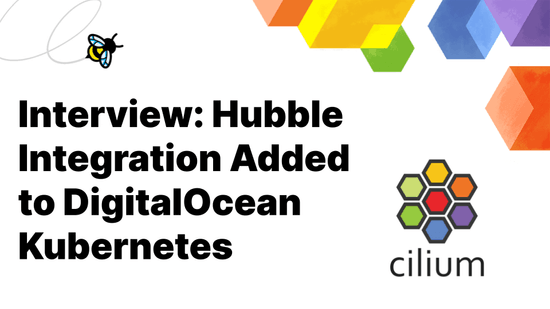Deep Dive into Cilium Multi-cluster
This is a deep dive into ClusterMesh, Cilium's multi-cluster implementation. In a nutshell, ClusterMesh provides:
-
Pod IP routing across multiple Kubernetes clusters at native performance via tunneling or direct-routing without requiring any gateways or proxies.
-
Transparent service discovery with standard Kubernetes services and coredns/kube-dns.
-
Network policy enforcement spanning multiple clusters. Policies can be specified as Kubernetes NetworkPolicy resource or the extended CiliumNetworkPolicy CRD.
-
Transparent encryption for all communication between nodes in the local cluster as well as across cluster boundaries.

The multi-cluster capability is built in layers and you can choose to use all layers or select and use only the layers you need.
Use Cases
Let's review some of the use cases of connecting multiple Kubernetes clusters before we dive into the implementation details.
Use Case: High Availability
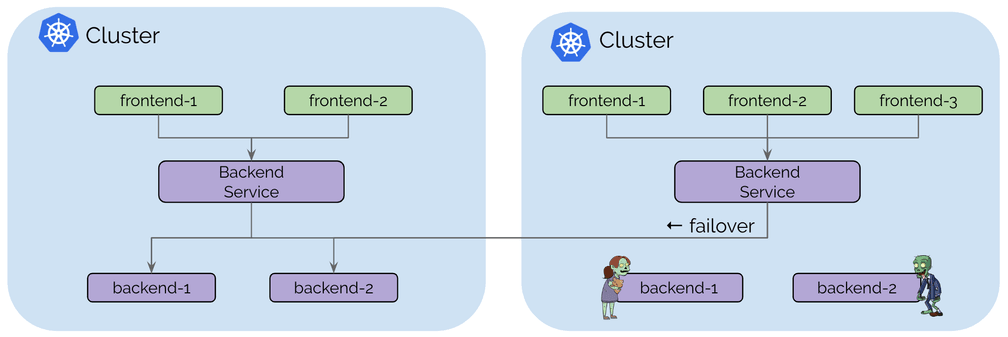
High availability is the most obvious use case for most. This use case includes operating Kubernetes clusters in multiple regions or availability zones and runs the replicas of the same services in each cluster. Upon failure, requests can fail over to other clusters. The failure scenario covered in this use case is not primarily the complete unavailability of the entire region or failure domain. A more likely scenario is temporary unavailability of resources or misconfiguration in one cluster leading to inability to run or scale particular services in one cluster.
Use Case: Shared Services
The initial trend of Kubernetes based platforms was to build large, multi-tenant Kubernetes clusters. It is getting more and more common to build individual clusters per tenant or to build clusters for different categories of services, e.g. different levels of security sensitivity.
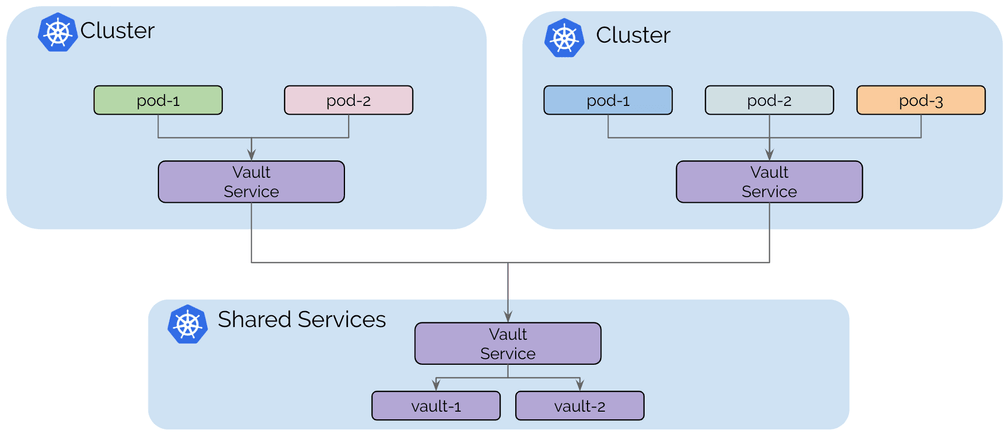
However, some services such as secrets management, logging, monitoring, or DNS are often still shared between all clusters. This avoids operational overhead in maintaining these services in each tenant cluster.
The primary motivation of this model is isolation between the tenant clusters, in order to maintain that goal, tenant clusters are connected to the shared services clusters but not connected to other tenant clusters.
Use Case: Splitting Stateful and Stateless services
The operational complexity of running stateful or stateless services is very different. Stateless services are simple to scale, migrate and upgrade. Running a cluster entirely with stateless services keeps the cluster nimble and agile. Migration from one cloud provider to another is possible easily.
Stateful services can introduce a potentially complex dependency chain. Migrating services typically involves the migration of storage.
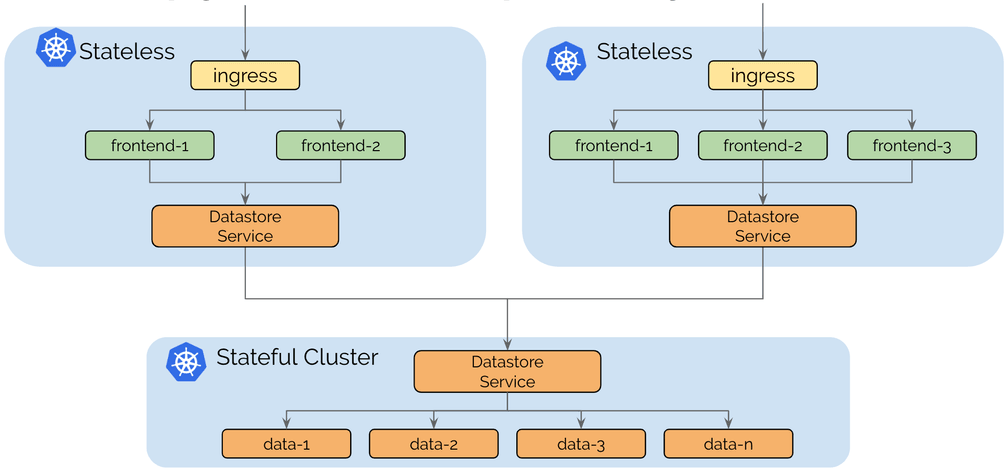
Running individual clusters for stateless and stateful allows isolating the dependency complexity to a smaller number of clusters and keeps the stateless clusters dependency free.
Control Plane
Requirements
-
All Kubernetes worker nodes must be assigned a unique IP address and all worker nodes must have IP connectivity between each other.
-
All clusters must be assigned unique PodCIDR ranges.
-
Cilium must be configured to use etcd as the kvstore.
-
The network between clusters must allow the inter-cluster communication. The exact firewalling requirements will depend on whether Cilium is configured to run in direct-routing or tunneling mode.
Architecture
The control plane is based on etcd and kept as minimalistic as possible:
-
Each Kubernetes cluster maintains its own etcd cluster which contains the state of that cluster. State from multiple clusters is never mixed in etcd itself.
-
Each cluster exposes its own etcd via a set of etcd proxies. Cilium agents running in other clusters connect to the etcd proxies to watch for changes and replicate the multi-cluster relevant state into their own cluster. Use of etcd proxies ensures scalability of etcd watchers. Access is protected with TLS certificates.
-
Access from one cluster into another is always read-only. This ensures that the failure domain remains unchanged, i.e. failures in one cluster never propagate into other clusters.
-
Configuration occurs via a simple Kubernetes secrets resource that contains the addressing information of the remote etcd proxies along with the cluster name and the certificates required to access the etcd proxies.
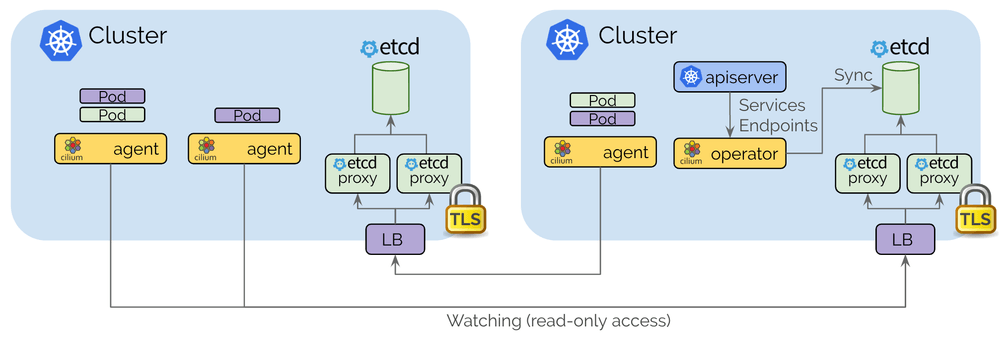
Pod IP Routing
The pod IP routing is the foundation of the multi-cluster ability. It allows pods across clusters to reach each other via their pod IPs. Cilium can operate in several modes to perform pod IP routing. All of them are capable to perform multi-cluster pod IP routing.
Tunneling mode
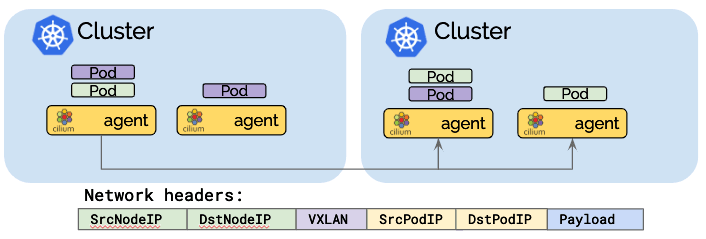
Tunneling mode encapsulates all network packets emitted by pods in a so-called encapsulation header. The encapsulation header can consist of a VXLAN or Geneve frame. This encapsulation frame is then transmitted via a standard UDP packet header. The concept is similar to a VPN tunnel.
-
Advantage: The pod IPs are never visible on the underlying network. The network only sees the IP addresses of the worker nodes. This can simplify installation and firewall rules.
-
Disadvantage: The additional network headers required will reduce the theoretical maximum throughput of the network. The exact cost will depend on the configured MTU and will be more noticeable when using a traditional MTU of 1500 compared to the use of jumbo frames at MTU 9000.
-
Disadvantage: In order to not cause excessive CPU, the entire networking stack including the underlying hardware has to support checksum and segmentation offload to calculate the checksum and perform the segmentation in hardware just as it is done for "regular" network packets. Availbility of this offload functionality is very common these days.
Direct-routing mode
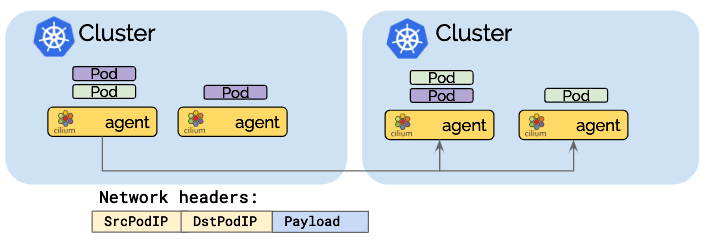
In the direct routing mode, all network packets are routed directly to the network. This requires the network to be capable of routing pod IPs. Propagation of pod IP routing information across nodes can be achieved using multiple options:
-
Use of the
--auto-direct-node-routesoption which is super lightweight route propagation method via the kvstore that will work if all worker nodes share a single layer 2 network. This requirement is typically met for all forms of cloud provider based virtual networks. -
Using the kube-router integration to run a BGP routing daemon.
-
Use of any other routing daemon that injects routes into the standard Linux routing tables (bird, quagga, ...)
When a point is reached where the network no longer understands pod IPs, network packet addresses need to be masqueraded.
-
Advantage: The reduced network packet headers can optimize network throughput and latency.
-
Disadvantage: The entire network must be capable of routing pod IPs which can increase the operational complexity.
Hybrid-routing mode
The hybrid-routing mode enables the use of direct-routing when available which will typically be in the local cluster or other clusters in the same VPC with a fall-back to tunneling mode when spanning VPCs or cloud-providers. This can limit the operational complexity and allows to pay the cost of optimization only when needed.
Service Discovery
The service discovery of Cilium's multi-cluster model is built using standard Kubernetes services and designed to be completely transparent to existing Kubernetes application deployments:
apiVersion: v1
kind: Service
metadata:
name: rebel-base
annotations:
io.cilium/global-service: 'true'
spec:
type: ClusterIP
ports:
- port: 80
selector:
name: rebel-base-
Cilium monitors Kubernetes services and endpoints and watches for services with an annotation
io.cilium/global-service: "true". For such services, all services with identical name and namespace information are automatically merged together and form a global service that is available across clusters. -
Any traffic to a ClusterIP of a global service will automatically be load-balanced to endpoints in all clusters based on the standard Kubernetes health-checking logic.
-
Each cluster continues to maintain its own ClusterIP for each service which means that Kubernetes and kube-dns/coredns are not aware of others clusters. The DNS server continues to return a ClusterIP valid only in the local cluster and Cilium will perform the load-balancing transparently.
-
Several additional annotations exist for fine-grained control such as unidirectional exposure or affinity policies.
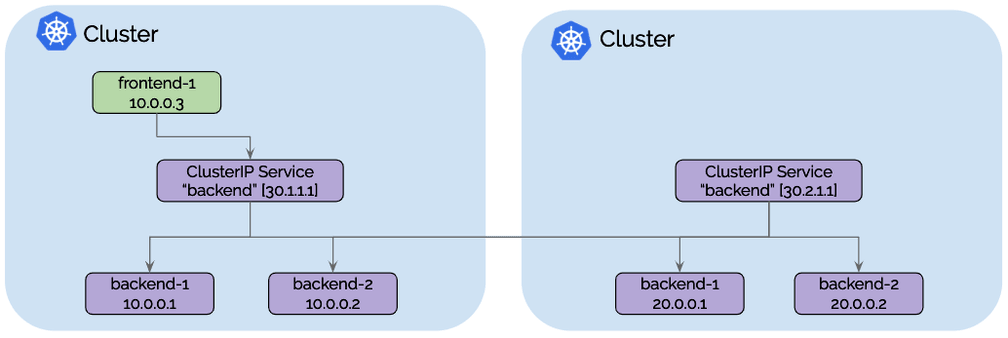
All traffic from frontend-1 to ClusterIP 30.1.1.1 will automatically be
load-balanced to pod IPs of backends of cluster 1 [10.0.0.1, 10.0.0.2] as
well as the pod IPs backends in cluster 2 [20.0.0.1, 20.0.0.2]. Each cluster
will perform health-checking of the local backend instances and notify other
clusters as pods appear, disappear or become unhealthy.
Transparent Encryption
The transparent encryption introduced in Cilium 1.4 is compatible with multi-cluster. Make sure to configure all nodes across all clusters with a common key and all communication between nodes is automatically encrypted.

Multi-cluster network policy
The short version is that policy enforcement that you are familiar with from a
single cluster will simply expand and work across clusters. Due to the fact
that policies are specified using pod labels, a policy that allows frontend
to talk to backend will apply to traffic with the cluster just as it will
to traffic crossing clusters.
Cilium does not automatically propagate NetworkPolicy or CiliumNetworkPolicy across clusters. It is the responsibility of the user to import the policy into all clusters. This is intentional as it means that each cluster gets to decide whether the cluster is permitted to receive communication from remote clusters or emit communication to remote clusters.
Allowing specific cluster cross-over paths
It is possible to establish policies that apply to pod in particular clusters
only. The cluster name is represented as a label on each pod by Cilium which
allows to match on the cluster name in both the endpointSelector as well as
the matchLabels for toEndpoints and fromEndpoints constructs:
apiVersion: 'cilium.io/v2'
kind: CiliumNetworkPolicy
metadata:
name: 'allow-cross-cluster'
description: 'Allow x-wing in cluster1 to contact rebel-base in cluster2'
spec:
endpointSelector:
matchLabels:
name: x-wing
io.cilium.k8s.policy.cluster: cluster1
egress:
- toEndpoints:
- matchLabels:
name: rebel-base
io.cilium.k8s.policy.cluster: cluster2The above example policy will allow x-wing in cluster1 to talk to
rebel-base in cluster2. X-wings won't be able to talk to rebel bases in the
local cluster unless additional policies exist that whitelist the
communication.
Relation to Istio multicluster
Both projects are independent but can complement each other nicely. A common way to combine Cilium and Istio multi-cluster is to use Cilium's multi-cluster Pod IP routing layer to fulfill the following requirement of the Istio Multicluster guide:
All pod CIDRs in every cluster must be routable to each other.
Further, the Cilium policy enforcement capability can be used to secure communication to and from the Istio control plane as well as protect sidecar bypass attempts via unsupported protocols such as UDP or IPV6 as well as protect from compromised sidecar proxies.
It is also possible to run a mix of global Istio services and Cilium global services side by side. Cilium's global services are reachable from all Istio managed services as they can be discovered via DNS just like regular services.
Getting Started
To get started, follow the step-by-step ClusterMesh tutorial which guides you through the process of connecting clusters together. Make sure to join our Slack channel to ask questions and brag about your setup.
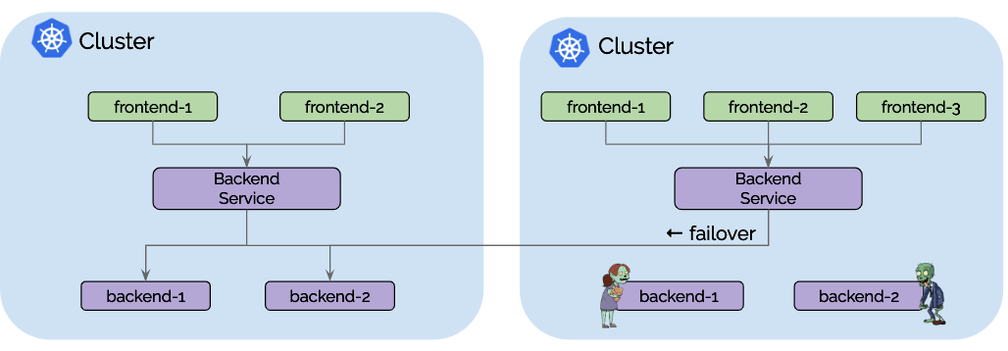
Further Material & References
-
Adrien Trouillaud has notified us on Slack that the multicluster-scheduler has integrated Cilium multi-cluster support. Make sure to have a look.
-
KubeCon US 2019 session: Connecting Kubernetes Clusters Across Cloud Providers
-
Cilium 1.4 release blog which was the release that introduced multi-cluster service discovery.
